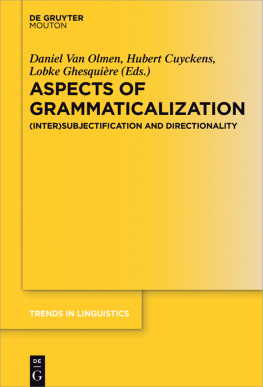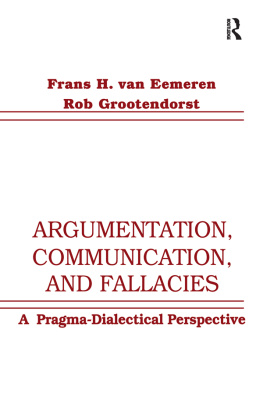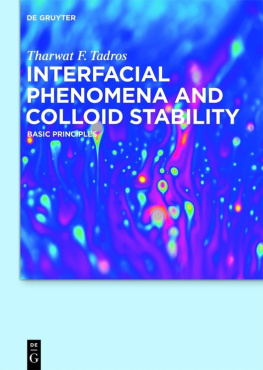Daniel Olmen - Aspects of Grammaticalization
Here you can read online Daniel Olmen - Aspects of Grammaticalization full text of the book (entire story) in english for free. Download pdf and epub, get meaning, cover and reviews about this ebook. year: 2016, publisher: De Gruyter Mouton, genre: Home and family. Description of the work, (preface) as well as reviews are available. Best literature library LitArk.com created for fans of good reading and offers a wide selection of genres:
Romance novel
Science fiction
Adventure
Detective
Science
History
Home and family
Prose
Art
Politics
Computer
Non-fiction
Religion
Business
Children
Humor
Choose a favorite category and find really read worthwhile books. Enjoy immersion in the world of imagination, feel the emotions of the characters or learn something new for yourself, make an fascinating discovery.
- Book:Aspects of Grammaticalization
- Author:
- Publisher:De Gruyter Mouton
- Genre:
- Year:2016
- Rating:5 / 5
- Favourites:Add to favourites
- Your mark:
- 100
- 1
- 2
- 3
- 4
- 5
Aspects of Grammaticalization: summary, description and annotation
We offer to read an annotation, description, summary or preface (depends on what the author of the book "Aspects of Grammaticalization" wrote himself). If you haven't found the necessary information about the book — write in the comments, we will try to find it.
Aspects of Grammaticalization — read online for free the complete book (whole text) full work
Below is the text of the book, divided by pages. System saving the place of the last page read, allows you to conveniently read the book "Aspects of Grammaticalization" online for free, without having to search again every time where you left off. Put a bookmark, and you can go to the page where you finished reading at any time.
Font size:
Interval:
Bookmark:

Daniel Van Olmen, Hubert Cuyckens, Lobke Ghesquire (Eds.)
Aspects of Grammaticalization
Trends in Linguistics Studies and Monographs

Editor
Volker Gast
Editorial Board
Walter Bisang
Jan Terje Faarlund
Hans Henrich Hock
Natalia Levshina
Heiko Narrog
Matthias Schlesewsky
Amir Zeldes
Niina Ning Zhang
Editor responsible for this volume
Volker Gast
Volume 305

ISBN 978-3-11-048969-9
e-ISBN (PDF) 978-3-11-049234-7
e-ISBN (EPUB) 978-3-11-048976-7
ISSN 1861-4302
Library of Congress Cataloging-in-Publication Data
A CIP catalog record for this book has been applied for at the Library of Congress.
Bibliographic information published by the Deutsche Nationalbibliothek
The Deutsche Nationalbibliothek lists this publication in the Deutsche Nationalbibliografie;
detailed bibliographic data are available on the Internet at http://dnb.dnb.de.
2017 Walter de Gruyter GmbH, Berlin/Boston
www.degruyter.com
The present volume emanates from the International Conference on Grammaticalization and (Inter)Subjectification (GRAMIS), held in Brussels from 11 to 13 November 2010. The conference was organized within the framework of the Interuniversity Attraction Pole (IAP-Phase VI, project P6/44 of the Belgian Science Policy Office on Grammaticalization and (Inter)Subjectfication, coordinated by Johan van der Auwera (University of Antwerp). The generous financial support of this research project is hereby gratefully acknowledged.
We are very much indebted to Volker Gast, editor of the series Trends in Linguistics Studies and Monographs for having included this volume into the series. Many thanks as well go to Birgit Sievert, Acquisitions Editor at De Gruyter Mouton, for her initial interest in this project.
While we, as editors, are responsible for the final choice of papers, the assessments of the following external referees have been a tremendous help in the selection process: Karin Aijmer, Kersti Brjars, Timothy Colleman, Bert Cornillie, Hendrik De Smet, Dagmar Divjak, Matthias Gerner, Elma Kerz, Svenja Kranich, Mara Jos Lpez-Couso, Christian Mair, Tanja Mortelmans, Colette Moore, Maj-Britt Mosegaard-Hansen, Muriel Norde, Helka Riionheimo, Lauren Van Alsenoy, Sophie Van Laer, Alice Vittrant and Ilse Wischer. Furthermore, the reviewers careful feedback and suggestions have greatly improved the quality of the papers.
Finally, we wish to thank the contributors for developing their study presented at the GRAMIS conference into an article for this volume, for their efficient cooperation and for their patience.
Hubert Cuyckens, Lobke Ghesquire and Danil Van Olmen
For more than three decades, grammaticalization has attracted great interest in the domains of historical linguistics and typology. The work by Lehmann (1995 [1982]), the collective volumes by Traugott and Heine (1991) and the handbook by Hopper and Traugott (1993) were crucial in the development of the field. They generated a wealth of case studies applying the parameters of grammaticalization laid out in these seminal works to (largely morphosyntactic) diachronic change and cross-linguistic variation studies (Bybee et al. 1994; Ramat and Hopper 1998; Fischer et al. 2000). Following up on some critical assessments, most poignantly voiced in a special issue of Language Sciences (Campbell 2001), grammaticalization seemed to have found renewed vigor, with the conference series New Reflections on Grammaticalization (Wischer and Diewald 2002; Fischer et al. 2004; Lpez-Couso and Seoane 2008; Seoane and Lpez-Couso 2008; Davidse et al. 2012; Smith et al. 2014); with the publication of such important volumes as Bisang et al. (2004), Stathi et al. (2010), Traugott and Trousdale (2010) and Van linden et al. (2010); with special issues in Language Sciences (Norde et al. 2013), Folia Linguistica (Von Mengden and Simon 2014) and Language Sciences (Breban and Kranich 2015); and with the publication of Heine and Kutevas World Lexicon of Grammaticalization (2002) and Narrog and Heines The Handbook of Grammaticalization (2011). Further, as Traugott (2010b) described and Himmelmann (2004) most clearly articulated, linguists also became aware that grammaticalization should not only be viewed as reduction, but also as expansion (see also Tabor & Traugott 1998). The period after the turn of the century also saw grammaticalization studies spreading out to the generative paradigm (Roberts and Roussou 2003; Van Gelderen 2004) and more recently to construction grammar (Traugott and Trousdale 2013). The importance of grammaticalization studies in nicely summed up in Breban et al. (2012: 1):
It is unquestionable that the study of grammaticalization and related processes of change has had an enormous impact on the recent linguistic scene. Grammaticalization research in the broad sense has created a meeting ground for approaches as varied as typology, language acquisition, comparative and diachronic study, synchronic language description, usage-based and corpus-based description, and discourse approaches. In about a quarter of a century, it has changed the general assumptions of language description , putting awareness of change at the centre of interest, rather than reserving it to specialized historical studies.
The present volume focuses on two dimensions which have been shown to be crucial in grammaticalization research, namely, the interrelation between grammaticalization and (inter)subjectification, and the directionality of grammaticalization. Our definition of grammaticalization is the classical one in Hopper and Traugott (2003: 18):
[T]he change whereby lexical items and constructions come in certain linguistic contexts to serve grammatical functions, and once grammaticalized, continue to develop new grammatical functions.
The concepts of subjectification and intersubjectification entered the grammaticalization literature after it had been pointed out by Traugott (in such hallmark publications as Traugott 1982, 1989, 1995, 2003; Traugott and Knig 1991) that semantic change in grammaticalization was not just a matter of semantic reduction, from which the present volume emanates.
As was pointed out in Cuyckens et al. (2010: 6) and Traugott (2010a: 3941), ([i]nter)subjectification often involves grammaticalization , but they are different types of changes which may occur independently of each other. For instance, the semantic shift from pig animal to pig impolite, slobbering eater is a case of lexical subjectification not accompanied by grammaticalization. Conversely, the development of prepositions such as to into an infinitive marker or by into a passive marker involve grammaticalization without (inter)subjectification. Still, Traugott (2010a: 39) argues, subjectification is more likely to occur in grammaticalization than in lexicalization or in semantic change in general, presumably because grammaticalization by definition involves recruitment of items to mark the speakers perspective.
Another issue that has long concerned grammaticalization researchers is whether grammaticalization is unidirectional or whether it is possible for a grammatical item to degrammaticalize , i.e. become less grammatical. In other words, it continues to be a matter of debate whether it is possible for a grammatical item to move from right to left rather than from left to right along Hopper and Traugotts (2003: 7) grammaticality cline: content item > grammatical word > clitic > inflectional affix. Hopper and Traugotts (2003: 18) definition of grammaticalization quoted above suggests that grammaticalization is irreversible (see also Lehmann 1995 [1982]: 19, Bybee et al. 1994 and Haspelmath 1999: 1044 for similar views). This idea of unidirectionality was criticized in, among others, Newmeyer (1998) and Campbell (2001). Importantly, as Traugott (2010b: 274) points out, the paths of grammaticalization had for the most part been developed by functionalist linguists who assumed... that universals are probabilistic tendencies, not absolute. A critical appraisal of unidirectionality has been a recurrent theme at the New Reflections on Grammaticalization conferences (see, e.g., Fischer et al. 2004), and has also raised awareness that degrammaticalization should be distinguished from lexicalization, that is, that lexicalization should be seen as a type of change in its own right, not merely as a counterexample to unidirectionality in grammaticalization (Traugott 2010b: 275; see also Brinton and Traugott 2005). The most important and comprehensive study of degrammaticalization to date is undoubtedly Norde (2009).
Font size:
Interval:
Bookmark:
Similar books «Aspects of Grammaticalization»
Look at similar books to Aspects of Grammaticalization. We have selected literature similar in name and meaning in the hope of providing readers with more options to find new, interesting, not yet read works.
Discussion, reviews of the book Aspects of Grammaticalization and just readers' own opinions. Leave your comments, write what you think about the work, its meaning or the main characters. Specify what exactly you liked and what you didn't like, and why you think so.








